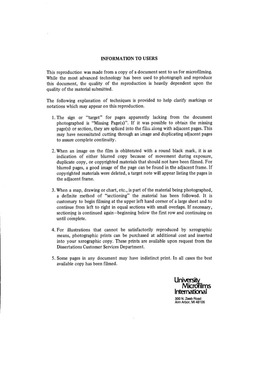| dc.contributor.author | Miller, Worth Robert, | en_US |
| dc.date.accessioned | 2013-08-16T12:29:17Z | |
| dc.date.available | 2013-08-16T12:29:17Z | |
| dc.date.issued | 1984 | en_US |
| dc.identifier.uri | https://hdl.handle.net/11244/5290 | |
| dc.description.abstract | Sectionalism has been an important factor in Oklahoma politics since 1890. Pearsonian correlations between voting and birthplace data, however, show that a rural-urban cleavage rivaled that of sectionalism during the Populist era. Counties served by rail at the time of their settlement produced sharply divergent cosmopolitan-hinterland culture areas. Laissez faire capitalism and Social Darwinism informed the ethos of the cosmopolitan culture. The infamous exploitations of Oklahoma's early years were the product of this more commercial region. Both the Democratic and Republican parties were strongest in cosmopolitan areas. Hinterland farmers, on the other hand, were the exponents of an egalitarian ethos which owed its inspiration to the republican ideology of the American Revolution. This ethos was human rather than system oriented, and instilled certain trepidations about Gilded Age development in its adherents. | en_US |
| dc.description.abstract | The Oklahoma Territory was opened to white settlement in a series of land runs beginning in 1889. The vast majority of this migrating to the new land settled in Kansas or Texas as before moving to Oklahoma. The People's party in Oklahoma had its origins in the south-central Kansas border area. Former Kansans provided the bulk of support for Oklahoma Populism in the first two years. Only in 1892 did Populism spread among enough southern-born settlers to validate the third party claim to transcend sectional loyalties. | en_US |
| dc.description.abstract | Since Oklahoma provided settlers with a new start, the People's party developed slowly in the new land. Populism was the ideology of those disillusioned with the panaceas of Gilded Age development. The third party blossomed, however, in the mid-1890s. This also coincided with the arrival of better third party leadership in the territory. The People's party fused with Democrats in 1896 and decimated the GOP at the polls. The move from a justice to an expediency orientation, coupled with Democratic footdragging in the overwhelmingly fusionist 1897 legislature, however, discredited third party leaders. Disillusionment, combined with an upswing in the economy in the late 1890s killed the People's party. Populism, however, did provide a real alternative to mainstream party control of Oklahoma politics in the mid-1890s by addressing many of the same problems that would later become issues for the Socialist party in the Sooner state. | en_US |
| dc.format.extent | xii, 417 leaves : | en_US |
| dc.subject | Oklahoma Politics and government To 1907. | en_US |
| dc.subject | Populism Oklahoma History. | en_US |
| dc.subject | History, United States. | en_US |
| dc.title | Oklahoma Populism : | en_US |
| dc.type | Thesis | en_US |
| dc.thesis.degree | Ph.D. | en_US |
| dc.thesis.degreeDiscipline | Department of History | en_US |
| dc.note | Source: Dissertation Abstracts International, Volume: 45-08, Section: A, page: 2630. | en_US |
| ou.identifier | (UMI)AAI8425543 | en_US |
| ou.group | College of Arts and Sciences::Department of History | |
